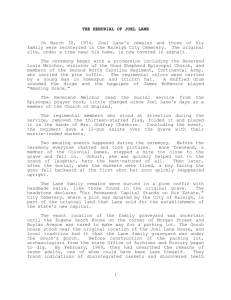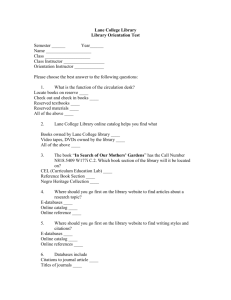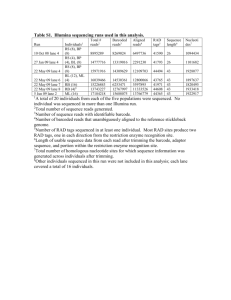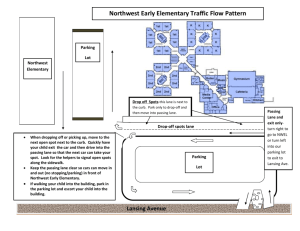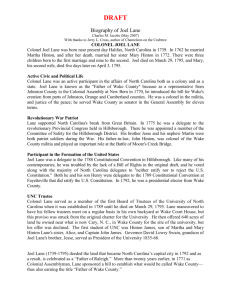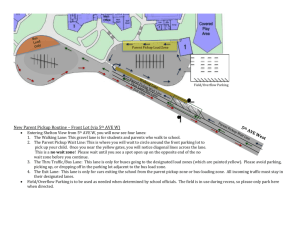Back Passage - Joel Lane Museum House
advertisement
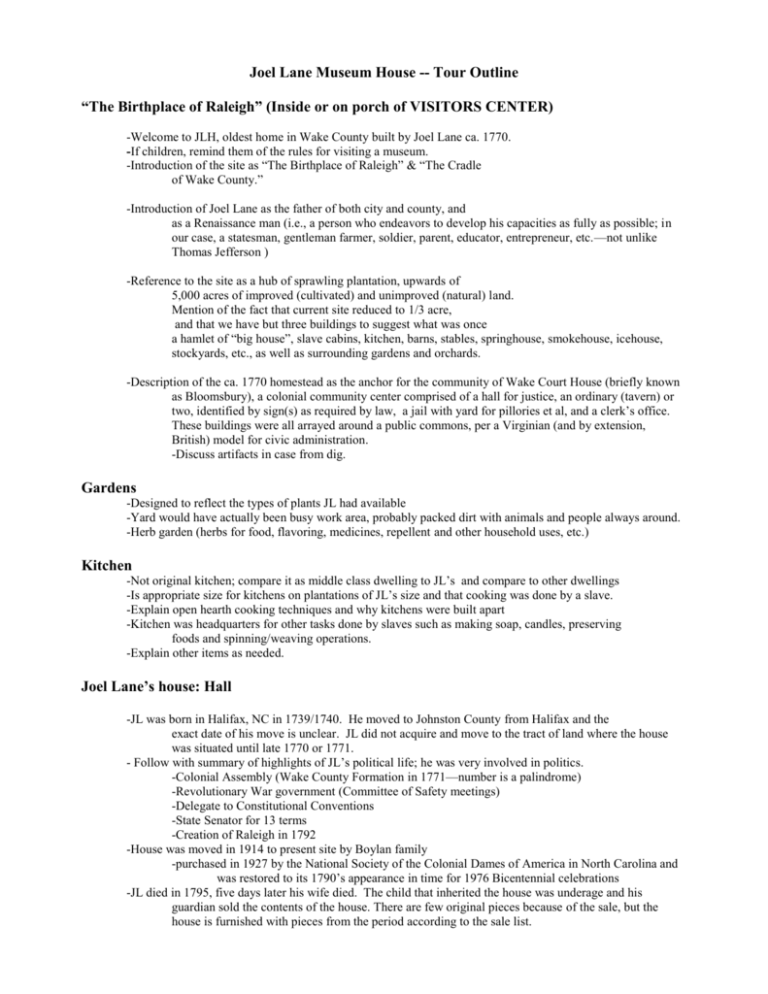
Joel Lane Museum House -- Tour Outline “The Birthplace of Raleigh” (Inside or on porch of VISITORS CENTER) -Welcome to JLH, oldest home in Wake County built by Joel Lane ca. 1770. -If children, remind them of the rules for visiting a museum. -Introduction of the site as “The Birthplace of Raleigh” & “The Cradle of Wake County.” -Introduction of Joel Lane as the father of both city and county, and as a Renaissance man (i.e., a person who endeavors to develop his capacities as fully as possible; in our case, a statesman, gentleman farmer, soldier, parent, educator, entrepreneur, etc.—not unlike Thomas Jefferson ) -Reference to the site as a hub of sprawling plantation, upwards of 5,000 acres of improved (cultivated) and unimproved (natural) land. Mention of the fact that current site reduced to 1/3 acre, and that we have but three buildings to suggest what was once a hamlet of “big house”, slave cabins, kitchen, barns, stables, springhouse, smokehouse, icehouse, stockyards, etc., as well as surrounding gardens and orchards. -Description of the ca. 1770 homestead as the anchor for the community of Wake Court House (briefly known as Bloomsbury), a colonial community center comprised of a hall for justice, an ordinary (tavern) or two, identified by sign(s) as required by law, a jail with yard for pillories et al, and a clerk’s office. These buildings were all arrayed around a public commons, per a Virginian (and by extension, British) model for civic administration. -Discuss artifacts in case from dig. Gardens -Designed to reflect the types of plants JL had available -Yard would have actually been busy work area, probably packed dirt with animals and people always around. -Herb garden (herbs for food, flavoring, medicines, repellent and other household uses, etc.) Kitchen -Not original kitchen; compare it as middle class dwelling to JL’s and compare to other dwellings -Is appropriate size for kitchens on plantations of JL’s size and that cooking was done by a slave. -Explain open hearth cooking techniques and why kitchens were built apart -Kitchen was headquarters for other tasks done by slaves such as making soap, candles, preserving foods and spinning/weaving operations. -Explain other items as needed. Joel Lane’s house: Hall -JL was born in Halifax, NC in 1739/1740. He moved to Johnston County from Halifax and the exact date of his move is unclear. JL did not acquire and move to the tract of land where the house was situated until late 1770 or 1771. - Follow with summary of highlights of JL’s political life; he was very involved in politics. -Colonial Assembly (Wake County Formation in 1771—number is a palindrome) -Revolutionary War government (Committee of Safety meetings) -Delegate to Constitutional Conventions -State Senator for 13 terms -Creation of Raleigh in 1792 -House was moved in 1914 to present site by Boylan family -purchased in 1927 by the National Society of the Colonial Dames of America in North Carolina and was restored to its 1790’s appearance in time for 1976 Bicentennial celebrations -JL died in 1795, five days later his wife died. The child that inherited the house was underage and his guardian sold the contents of the house. There are few original pieces because of the sale, but the house is furnished with pieces from the period according to the sale list. 2 The desk is one of the few pieces believed to have been owned by Joel Lane himself. -Ask for questions. Passage -Construction of the house for ventilation (doors opposite each other, high ceilings). Discuss other topics such as the floorcloth as needed and piece of plexiglass covering walls as were prior to restoration— stripped of paint and plaster ceiling. Tavern/Parlor -In 1771, Joel Lane received permit to operate a tavern (bed & breakfast) “in his home”—that business operation may have taken place in this room and the adjoining bedchamber in the earlier period of his life here. -Later, it may have served as a place for ladies to take tea or as a winter sitting room for the family. -JL’s desk—one of the few original pieces of furniture and one of the nicest objects in house—resembles a desk owned by Henry Lane which is at the Mordecai House (which was orig. Henry’s home) -Discuss other topics such as the clock, map, mirror, checkerboard, gorget, or books as you see fit. -Lack of paint in the ceiling (we don’t know why!) and explain the hearth upstairs. -Bible box with Bible donated by a descendant of son William Lane’s family Bed Chamber -Room for guests (prominent guests were Lord Tryon, Henry Husband and the commissioners) -Discuss bed and other artifacts as needed. Back Passage -Door under the stairs is the only closet in the house—may have led to cellar. -The office was possibly Joel Lane’s office: discuss plantation operations, tavern, as an office for political duties, etc. Also Joel Lane rented space in his home to the newly created Wake Co. before the first courthouse was built—may have been this space. -Lists of enslaved people on Lane’s plantation from will of 1794 and estate sale of 1795. Mention three types of slave: house, field (largest in number), and artisans; advantages and disadvantages of both. -Area used for overflow from meetings, an informal sitting area, storage area, or waiting area for people waiting to do business with JL. Front entrance used only by those of planter class. -The lower ceiling indicates that it was an addition; may have first been open porch which was later enclosed Upstairs Landing -Possible changes in roofline (illustrated on foam board display) Children’s Bedchamber -JL had two wives and they provided 12 children -- on average, a new child born every 2 years. -The oldest child was 29 when the youngest was born (averaged 6-7 in house at one time) -Room served all of the children, sleeping across the width of the bed. The cot is for a nanny, a slave, who would probably have helped out Mrs. Lane. -Discuss “Sleep Tight, Don’t Let The Bedbugs Bite” and point out the chamber pot. -Other topics: fans, toys, hornbook, slate, Mordecai house & family. Lane Chamber -Begin with bed and discuss pulling the hangings for warmth. -Women’s life and work: childbirth, responsible for feeding everyone, spinning, weaving, sewing, herbal medicines, teaching children, providing for guests, organizing all the domestic chores but not necessarily doing them herself. END OF TOUR = 45 minutes to an hour, depending on questions. edited & revised 2990.04.03bpl
